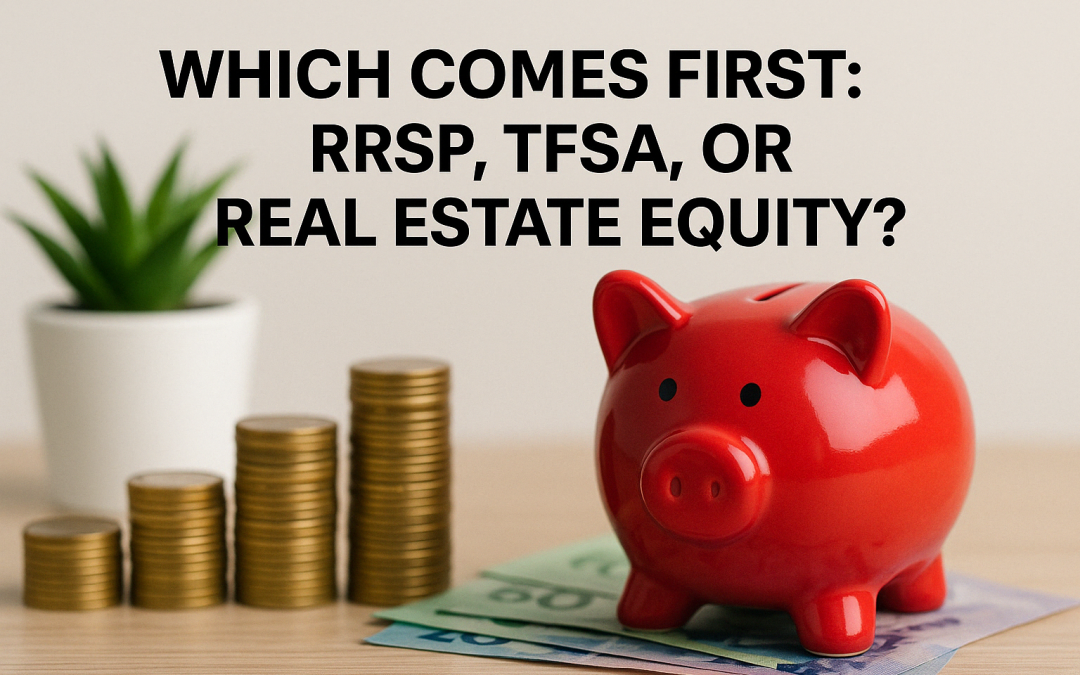Which Comes First: RRSP, TFSA, or Real Estate Equity?
A Financial Planner’s Guide to Drawing Income in Retirement
You’ve spent years building wealth—inside RRSPs, TFSAs, and real estate.
Now the question is: How do you turn it into income for retirement?
Many Canadians feel unsure where to start:
“Should I withdraw from my RRSP first?”
“Is it better to use my TFSA?”
“Can I tap into my home equity without selling?”
This isn’t just about math—it’s about timing, taxes, and strategy.
In this article, I’ll walk you through how to think about each asset, and how to sequence your withdrawals for long-term success.
Step 1: Start With Your Cash Flow Needs and Tax Bracket
Before touching any account, understand how much you actually need each year—and how that income will be taxed.
-
RRSPs and RRIFs: Fully taxable when withdrawn
-
TFSAs: Completely tax-free
-
Real estate equity: Can be accessed tax-free (via downsizing or reverse mortgage), but impacts estate and liquidity
💡 A good withdrawal plan blends these sources to keep you in an optimal tax bracket and extend the life of your wealth.
Step 2: RRSPs – Structured, But Taxable
Your RRSP becomes a RRIF by age 71, and minimum withdrawals are required annually. These withdrawals are taxed as income.
Why you might draw from your RRSP earlier: ✅ You’re in a lower tax bracket now than you will be later
✅ You want to reduce your overall tax bill over time
✅ You want to avoid large RRIF withdrawals that could trigger OAS clawbacks
💡 Sometimes it’s better to start drawing RRSPs in your early 60s to smooth out your tax curve.
Step 3: TFSAs – The Flexible, Tax-Free Cushion
TFSAs are one of the most powerful tools in retirement.
Withdrawals are not taxed and don’t affect your income-tested benefits.
TFSAs work well when: ✅ You want to top up your income without increasing your tax bill
✅ You’re delaying CPP or OAS and need interim funds
✅ You want flexibility for unexpected expenses or charitable giving
💡 TFSAs are great for filling in the gaps between other income sources.
Step 4: Real Estate Equity – Turning Assets into Income
Your home or rental property may hold substantial equity—but it isn’t liquid until you take action.
Here are ways to turn that equity into income:
-
Downsize and invest the surplus
-
Use a reverse mortgage for tax-free cash flow
-
Sell a rental property and reinvest the proceeds into a diversified portfolio
💡 Real estate equity isn’t a savings account—but with the right strategy, it can become a stable, tax-efficient income stream.
Step 5: The Best Strategy Is Often a Blend
Many people think they have to choose one source. In reality, the best results come from a layered strategy:
✅ Start drawing RRSPs early to control taxes
✅ Use your TFSA to supplement income without triggering higher tax
✅ Activate real estate equity later—when it best supports your goals
“Suppose one of you wants to build a tower. Won’t you first sit down and estimate the cost?” – Luke 14:28
The right income plan doesn’t just look at what you have—it looks at how and when to use it.
Final Thoughts
Retirement planning isn’t just about owning the right assets—it’s about drawing from them wisely.
With the right strategy, you can: ✅ Minimize taxes
✅ Maximize flexibility
✅ And turn your wealth into a life of impact, freedom, and purpose
Ready to Build Your Retirement Income Plan?
If you’re not sure which bucket to draw from first, I can help.
📅 Book a 30-minute discovery call and let’s build your custom income plan—one that fits your life, not just the spreadsheets.

